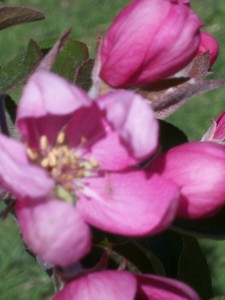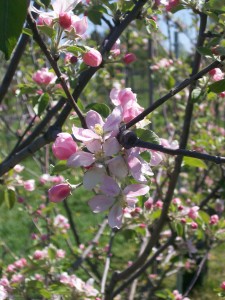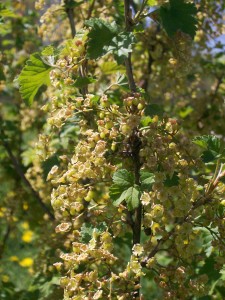Spring update and plant sale at the Library.
Even with the cold couple of nights we just had in the Finger Lakes, the trees and bushes still look good. The plums are either in petal fall or will be this weekend. The Hungarian cherries are in full bloom as are the most of the pears. The apples are in king bloom, except for a few really early varieties that are almost in full bloom ( Egremont Russet, St. Edmund’s Russet and Ashmead’s Kernel). Of course the cider apples are just starting to wake up. The currants are at the end of their bloom and the gooseberries are in full bloom. It looks like we could have a huge crop of Ribes! We planted 50 peach trees today, which will be trained in the “perpendicular V” method (what a plant nerd) allowing the peaches to be planted 54 inches between trees.
The Edith B. Ford Memorial Library in Ovid will be having a plant sale on Saturday May 1st from 10am to 2pm. There will be a barbecue by 4h, plants from local farms, divided perennials from local gardeners, fruit trees from Daring Drake, music by Kevin Moss (Cornell Plantation’s great story teller), children’s plant activities, bake sale and a trunk display of quilts by Mary Diamond. I’m sure I forgot half of the stuff. All proceeds go to funding the library’s programs and book purchases. Hope to see you there!

Pear bloom (cv. Moonglow)

Red Fleshed Apple flowers (cv. Firecracker)

Apple bloom (cv. Egremont Russet)

Red Currant flowers ("wild" seedling on our property)

Ok plant nerd, what’s up with new world vs. old world currants? I was just reading a book on plants utilized by the Native Americans and ‘discovered’ by Lewis & Clark on their journey west, including a variety of currant. I then encountered confusing and seemingly contradictory information about how ‘native’ currants were introduced in the 1600s by settlers from europe. How can something native be introduced? And how would these ‘native’ currants do in a taste test?